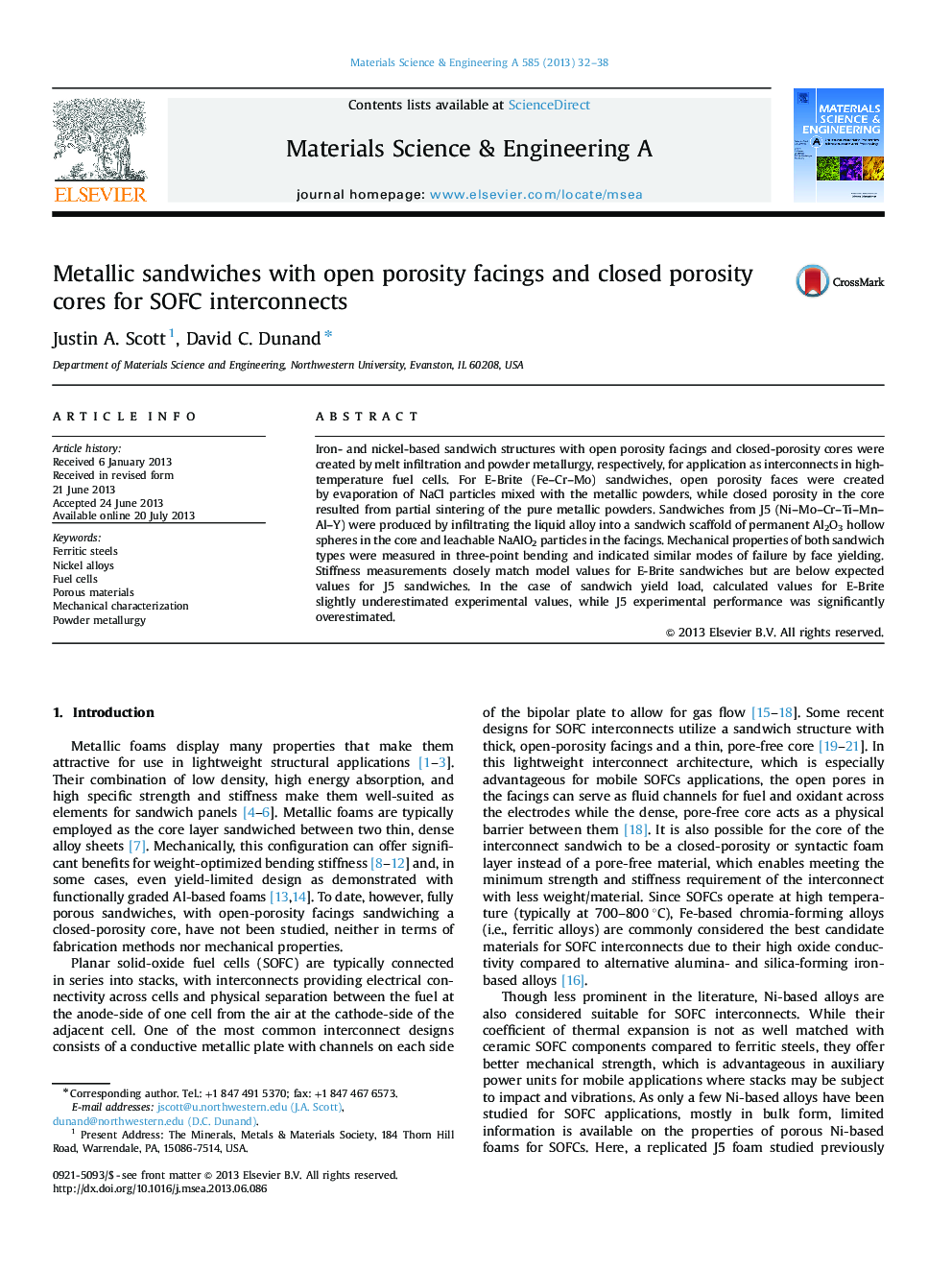| Article ID | Journal | Published Year | Pages | File Type |
|---|---|---|---|---|
| 7982275 | Materials Science and Engineering: A | 2013 | 7 Pages |
Abstract
Iron- and nickel-based sandwich structures with open porosity facings and closed-porosity cores were created by melt infiltration and powder metallurgy, respectively, for application as interconnects in high-temperature fuel cells. For E-Brite (Fe-Cr-Mo) sandwiches, open porosity faces were created by evaporation of NaCl particles mixed with the metallic powders, while closed porosity in the core resulted from partial sintering of the pure metallic powders. Sandwiches from J5 (Ni-Mo-Cr-Ti-Mn-Al-Y) were produced by infiltrating the liquid alloy into a sandwich scaffold of permanent Al2O3 hollow spheres in the core and leachable NaAlO2 particles in the facings. Mechanical properties of both sandwich types were measured in three-point bending and indicated similar modes of failure by face yielding. Stiffness measurements closely match model values for E-Brite sandwiches but are below expected values for J5 sandwiches. In the case of sandwich yield load, calculated values for E-Brite slightly underestimated experimental values, while J5 experimental performance was significantly overestimated.
Keywords
Related Topics
Physical Sciences and Engineering
Materials Science
Materials Science (General)
Authors
Justin A. Scott, David C. Dunand,
